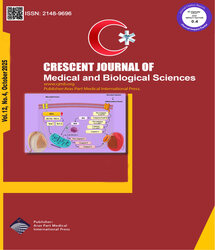

| Original Article | |
| The Comparison of Composition and Biological Activities in Wild and Cultivated of Thymus kotschyanus Essential Oils and Methanolic Extracts From East Azarbayjan, Iran | |
| Haedeh Mobaiyen1, Gholamreza Dehghan2, Faranak Elmi3, Amir Hossein Talebpour4 | |
| 1Department of Microbiology, Tabriz Branch, Islamic Azad University, Tabriz, Iran 2Department of Biology, Faculty of Natural Science, University of Tabriz, Tabriz, Iran 3Department of Biology, Faculty of Science, Marand Branch, Islamic Azad University, Marand, Iran 4Research Center for Agriculture and Natural Resources, East Azarbaijan, Tabriz, Iran |
|
|
CJMB 2017; 4: 017-022 Viewed : 6291 times Downloaded : 3841 times. Keywords : Antimicrobial activity, Cultivation, Essential oil composition, Thymus kotschyanus |
|
| Full Text(PDF) | Related Articles | |
| Abstract | |
Objective: The gathering of wild type Thymus kotschyanus as medicinal plant is common in Iran because of their several biological properties which caused destruction of them. The aim of this research was to compare the chemical composition, antioxidant and antibacterial properties of wild and cultivated type of T. kotschyanus collected from East Azarbayjan, Iran. Material and Methods: The essential oils (EOs) from aerial parts of wild and cultivated T. kotschyanus were investigated by gas chromatography/mass spectrometry (GC/MS). Antibacterial activity of (EOs) and methanol extracts were tested against bacteria by disc diffusion method and determining of their minimum inhibitory concentration (MIC) values by agar dilution method and antioxidant activity by DPPH and FRAP assays. Results: Thirty-five components were identified representing more than 90% of the total oil constituents. The oils were dominated by monoterpene hydrocarbons (50.2%) for wild type and oxygenated monoterpenes (63.38%) for cultivated type. The major components in the oils of the wild type were; thymol (29.96%), p-cymene (21.35%) and α-pinene (12.72%) and for the cultivated type were; thymol (47.48%) and α-pinene (5.49%). The MIC values of bacterial strains, which were sensitive to the EO of T. kotschyanus, were in the range of 2-128 μg/mL in wild type and 2-16 μg/mL in cultivated type. Conclusion: Our data shows that, cultivation significantly affects the EOs’ chemical composition and antioxidant potential of T. kotschyanus. They signify a reasonable source of natural antibacterial substances that exhibited potential as a drug for use in pathogenic bacteria. |
Cite By, Google Scholar
Google Scholar
PubMed
Online Submission System
 CJMB ENDNOTE ® Style
CJMB ENDNOTE ® Style
 Tutorials
Tutorials
 Publication Charge
Medical and Biological Research Center
About Journal
Publication Charge
Medical and Biological Research Center
About Journal
Aras Part Medical International Press Editor-in-Chief
Arash Khaki
Deputy Editor
Zafer Akan

















